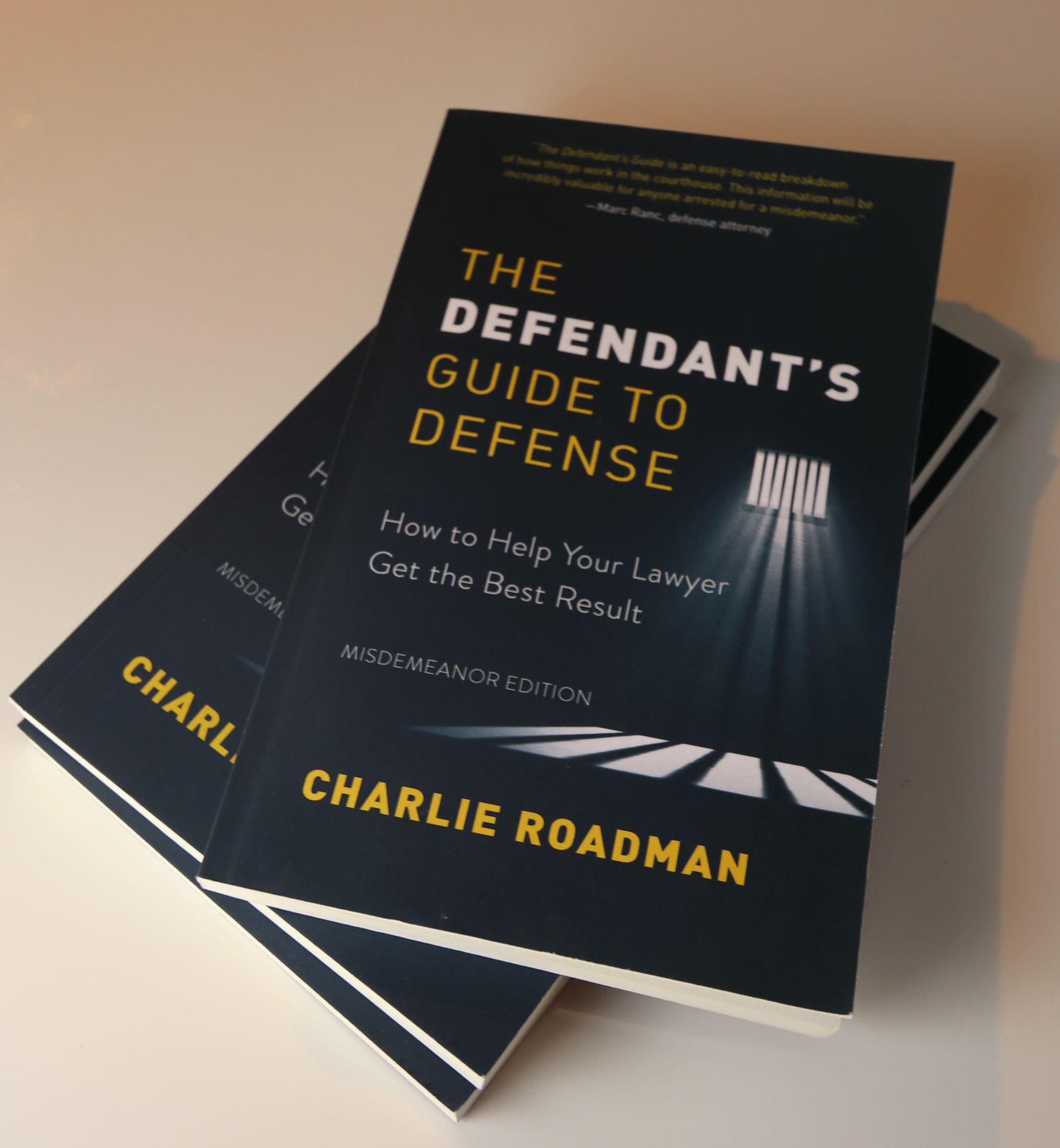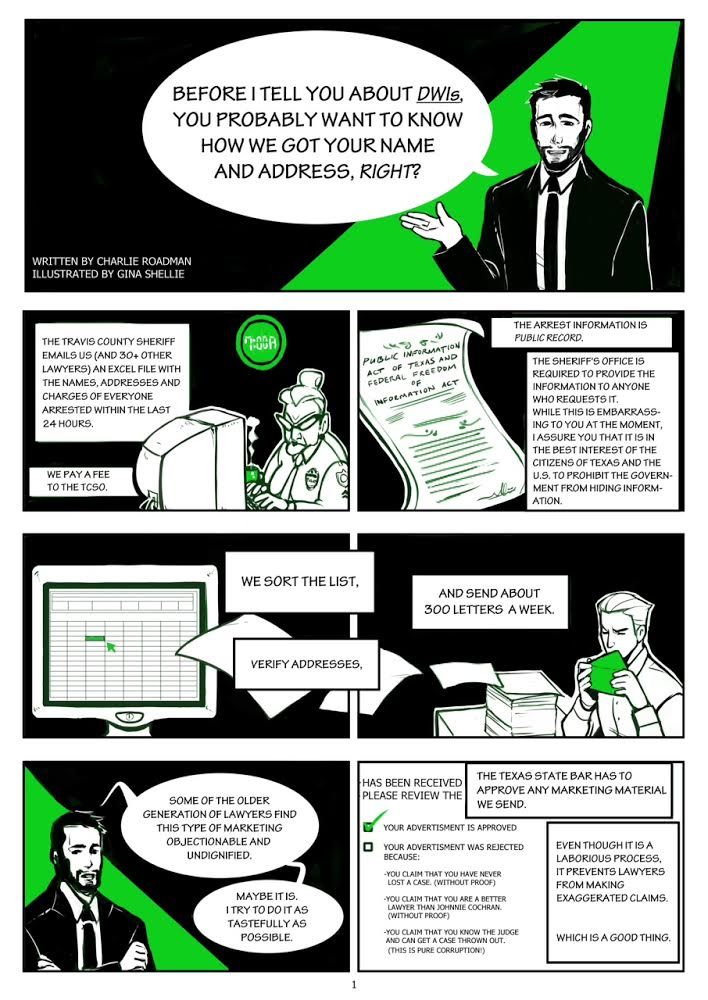Voluntary IID FAQ
Watch Charlie Schedule an Ignition Interlock Device Install
Charlie calls Smart Start and schedules an IID installation.
What You Need to Know About the Ignition Interlock Device
Charlie explains some of the common mistakes that people make dealing with the Ignition Interlock Device.
Getting an Ignition Interlock Device
Watch Charlie get an IID installed and see the various situations that occur.
Q: You've suggested that I voluntarily get an Ignition Interlock Device (IID). Why?
A: I think it will benefit our plea negotiations. Or, we already have an agreement with the prosecutors.
Q: What is the Ignition Interlock Device (IID)?
A: It is a device that is attached to your car ignition system. To start the car, you have to blow into a tube. If the IID does not detect alcohol, it allows the car to start. You also have to blow into the IID at random times during the drive. Watch the video above I made about putting it in my car for two months.
Q: Which IID company do you recommend?
A: Smart Start. They are reliable and work well with defense attorneys.
Q: How much does it cost?
A: About $90/month. Plus an installation fee. Here is a coupon for 10% off monthly lease.
Q: How do I get started with the IID?
STEP 1: Call Smart Start and set up an appointment to get an IID installed. Tell them that you have a criminal case, but you're doing this voluntarily and have not been court ordered to get an IID.
STEP 2: Tell us when that appointment is by filling out this form.
STEP 3: Get the device installed and make sure you give Smart Start written permission to send us your IID reports.
STEP 4: Email/text us a copy of the installation receipt.
Q: How do you get the IID reports?
A: The company that you rent the IID from will send us monthly reports. Make sure that you tell them that you are getting the IID "Voluntarily" (because the court has not ordered you to get it). Give them our contact info.
Q: It sounds terrible.
A: It is not as bad as it seems. You get used to it.
Q: Won’t people know I’m using it?
A: Only people inside your car. If you lean down a bit, no one from outside your car can see you blow.
Q: How long do I have to keep it in my car?
A: It depends. The minimum is 3 months. But the prosecutors could require longer in order to get a good deal.
Q: What happens if the IID detects alcohol?
A: The court calls this a “hot blow.” It will show up on the reports and make getting the IID worthless.
Q: Can you trick the IID?
A: No. Alcohol that you’ve consumed (wine, beer, liquor) is expelled via your breath when you exhale. You must blow deep and long breaths to start the car. It is not possible to blow “lightly” to hide the alcohol in your system.
Q: What if the alcohol was from mouthwash?
A: The alcohol in mouthwash stays in your mouth (because you do not swallow it). The IID can’t tell the difference between alcohol in your mouth or alcohol you’ve consumed. It will say “violation.” However, if the alcohol is really from mouthwash, you can rinse your mouth out with water and blow again in a few minutes. The IID will show “clear” and you can start your car. You will not get in trouble for this. However, they will look very closely at it. Try not to violate with mouthwash!
Q: How does the IID company (and prosecutors/judges) know whether the violation was from real alcohol or mouthwash?
A: Consumed alcohol cannot be hidden by washing your mouth out with water. If you do not blow a “clear” reading within a few minutes of the initial violation, they will assume you’ve been drinking.
Q: What if I don’t have time to wash my mouth out and blow again immediately? For example, I have to get to work…
A: The prosecutors will NEVER believe that you really didn’t have time. They will assume that you didn’t blow again because you knew the alcohol violation was real.
Q: Do people really blow “hot” into their IIDs?
A: Every day. I estimate that 20 people blow “hot” every day in Travis County.
Q: If people know they have an IID in their car, why would they blow into it after they’ve been drinking?
A: Unfortunately, people underestimate how long it takes alcohol to get out of their system. Most violations occur because people drink the night before. They assume that the alcohol won’t be detected in the morning. The lesson is that sleeping does not magically remove alcohol from your system.
Q: If I drink the night before, how long do I need to wait?
A: Obviously, my advice is not to drink at all because that is what the judge has ordered. If you are going to drink alcohol (and violate the judge’s order), I’d wait at least 36 hours before blowing into the IID. Or 48 if you drank a lot.
Q: Should I buy an alcohol detector and test myself before I blow in the morning?
A: Those handheld commercial alcohol detectors are cheap and unreliable. But they are better than nothing, I guess.
Q: Can someone else drive my car with the IID?
A: Yes. However, just make sure that you teach them how to blow into the IID correctly so they don’t get a “problem blow”. If there are multiple “problem blows”, the company will think you are trying to trick the device and the device will lock up.
Q: What if I don’t own a car?
A: You can put it into anyone’s car (who will let you). As long as you are the primary driver it will be fine. You don’t have to technically own the car.
Q: Can I have my friend put it in their car and blow into for me?
A: No. The IID takes a picture of who is blowing. Having someone else blow once in a while is fine. But you should be the primary driver.
Q: Can I just leave my car in the driveway/garage and use other transportation (ride-sharing, busses, taxis)?
A: Yes. But they want to see data from you using the car. Technically, you can start the car twice a day and just sit in it for a few minutes (in the driveway) and scroll through social media.
Q: Are there any options other than the IID?
A: Yes, you can use a portable alcohol monitor. You must blow into it 4 times a day, within specific windows. For example, 7am-9am, noon-2pm, 6p-7pm, and 10pm-11pm. This requires serious planning skills and a fairly stable lifestyle. You cannot drink at all. I’ve had many clients try it and give up. It is much harder than having an IID.
Q: I have more questions.
A: No problem. E-mail or call us at 512-472-1113.



